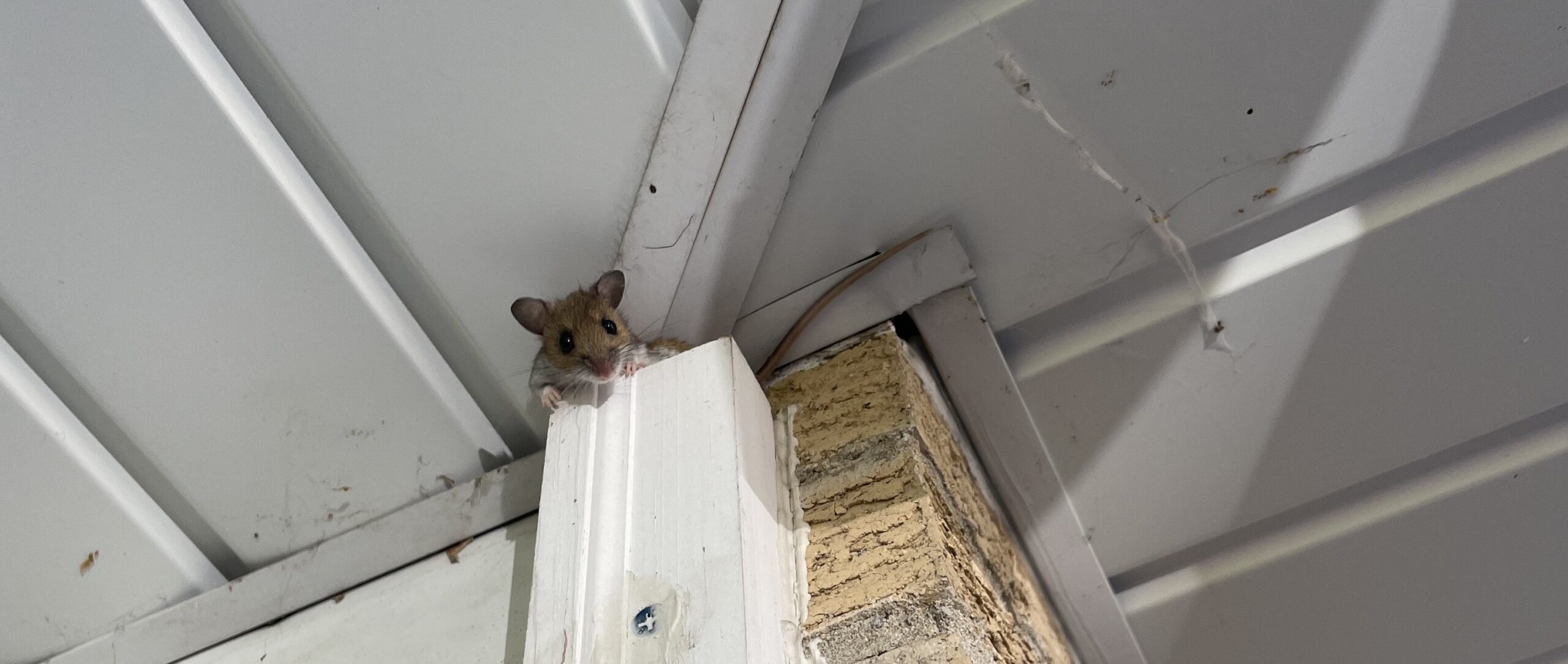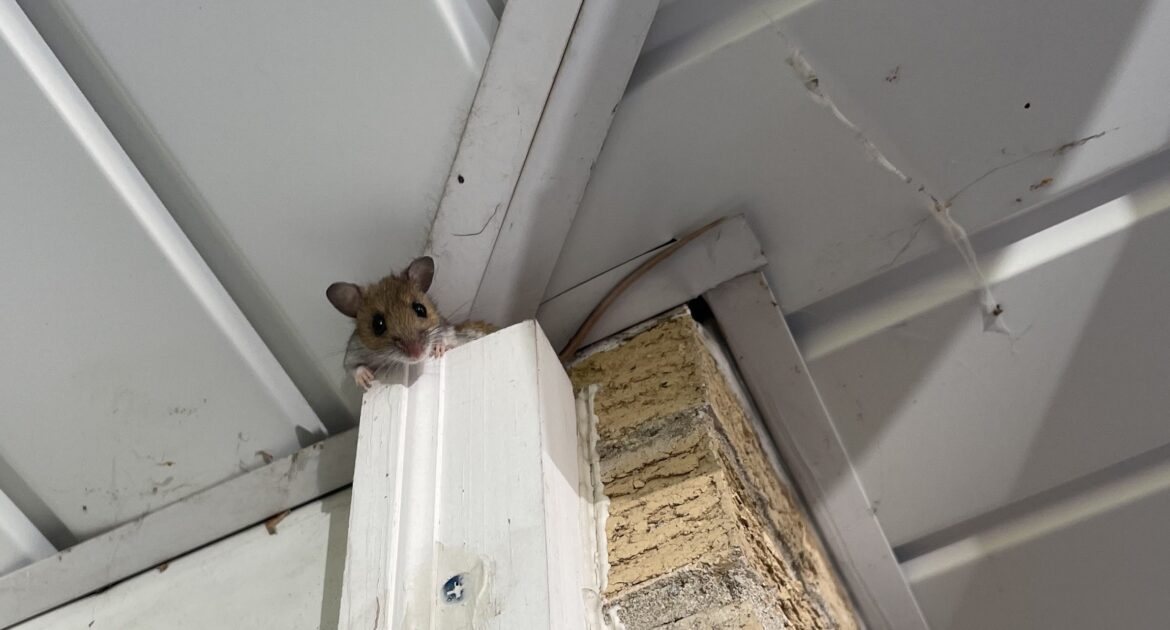When the temperature drops in the fall, mice start seeking warmth and shelter indoors, making your home an attractive target. Understanding why mice invade homes in the fall is crucial for effective mouse removal in Toronto. These small rodents are looking for food and a safe place to nest, and your home offers both.
Once inside, mice can be more than just a nuisance; they can cause significant damage and pose health risks. Identifying their presence early is essential. But what do mouse droppings look like? Typically, they are small, dark, and pellet-shaped, often found near food sources or nesting areas.
While it might be tempting, it’s important to know why you shouldn’t use a mouse trap as a long-term solution. Traps can be inhumane, only provide a temporary fix, and don’t address the root of the problem.
Professional, humane solutions from Skedaddle ensure that your home remains rodent-free without resorting to ineffective and cruel methods. By understanding these factors, you can better appreciate the need for professional wildlife removal services to keep your home safe and secure.
The Seasonal Shift
As the temperature drops, mice begin to seek out warmer environments. The fall season marks a time of preparation for the colder months ahead. Just as we winterize our homes, mice are on the hunt for shelter to stay safe and warm. Your cozy house becomes an attractive option for them to escape the chilly weather.
Mice are incredibly resourceful creatures. They can detect even the smallest of openings, squeezing through gaps as tiny as a dime. This makes it easy for them to infiltrate homes, especially if there are any cracks or holes in the exterior walls. Once inside, they find hidden corners, attics, and basements to nest and reproduce.
Not only do they seek warmth, but they also look for food. The fall season brings a bounty of harvest, and mice are excellent at foraging. They will scavenge for crumbs, pet food, and any accessible pantry items, making your kitchen their personal buffet.
Understanding Mice
Mice are nocturnal animals, meaning they are most active during the night. This makes it difficult for homeowners to notice their presence until the infestation has grown. They are also known for their rapid breeding cycles. A single pair of mice can produce up to 60 offspring in a year, quickly turning a minor issue into a major problem.
Their keen sense of smell and hearing helps them locate food and avoid predators. Mice communicate through high-pitched squeaks, which are often inaudible to humans. These squeaks help them coordinate movements and alert each other to danger.
Mice are also excellent climbers and jumpers. They can scale walls and leap up to a foot in height, making it easy for them to access various parts of your home. This agility allows them to reach food sources that may seem out of their reach, adding to the challenge of keeping them at bay.
Signs of a Mouse Infestation
One of the first indications of a mouse problem is discovering droppings. But what do mouse droppings look like? They are small, dark, and pellet-shaped, typically found near food sources or along their travel paths. If you notice these droppings, it’s a clear sign that mice are present in your home.
Another telltale sign is gnaw marks. Mice have constantly growing teeth, so they gnaw on various materials to keep them in check. You might find chewed wires, furniture, or food packaging. Additionally, you may hear scratching or scampering sounds in the walls or ceilings, particularly at night when mice are most active.
Nests are another indicator of a mouse infestation. Mice build nests using soft materials like shredded paper, fabric, and insulation. These nests are usually hidden in secluded areas like attics, basements, or behind appliances. If you come across these nests, it’s a strong sign that mice have made themselves at home.
Finding unusual pet behaviour can also signal a mouse infestation. Pets, especially cats and dogs, have heightened senses of smell and hearing compared to humans. If your pet starts to paw at walls, bark at air vents, or focus intently on an empty space, they might be detecting the presence of mice. Additionally, if you notice your pet carrying around small, dark objects, these could be mouse droppings.
Another symptom of an infestation is an unpleasant, musky odour emitting from hidden areas. This smell often comes from a buildup of mouse droppings and urine, which can become quite pungent. If you detect this odour, it indicates that mice have been in your home for some time.
Lastly, tracks and runways can also reveal a mouse invasion. Mice often use the same paths to travel between their nests and food sources. You might find smudge marks along baseboards or dusty surfaces, left behind by their dirty fur and feet.
Recognizing these signs early can help you take swift action, potentially saving you from more extensive damage and more significant infestations. Working with professionals who understand humane and effective removal methods ensures that your home remains safe and mouse-free.
Why You Shouldn’t Use a Mouse Trap
While it may be tempting to set out mouse traps to tackle the problem yourself, it’s not the best approach. Mouse traps can provide a quick fix, but they don’t address the root of the issue. Traps only catch individual mice, leaving the rest of the infestation to continue breeding and causing damage.
Additionally, handling traps can be dangerous and unsanitary. Mice carry diseases and parasites, posing health risks to you and your family. Improper disposal of trapped mice can also lead to unpleasant odours and potential contamination.
DIY methods often fail to identify and seal entry points, allowing more mice to enter your home. It’s crucial to address the source of the problem to prevent future infestations. This is where professional services like Skedaddle come into play.
The Skedaddle Difference
At Skedaddle, we take a comprehensive approach to wildlife removal. Our team of experts is trained to handle mouse infestations with the highest level of care and professionalism. We don’t just remove the mice; we ensure they can’t return.
Our process begins with a thorough inspection of your home to identify entry points and assess the extent of the infestation. We then use humane methods to remove the mice, ensuring no harm comes to them or your property. After removal, we seal all potential entry points to prevent future invasions.
We also clean and sanitize the affected areas to eliminate any health risks associated with mouse droppings and urine. Our goal is to restore your home to a safe and comfortable environment, free from the threat of mice.
Skedaddle’s team has years of experience and specialized training in wildlife removal. We understand mouse behaviour and know how to effectively address infestations. By choosing Skedaddle, you can trust that your home is in good hands.
Choose Skedaddle for Humane Wildlife Removal in Toronto
The fall season brings a surge in mouse activity as these small creatures seek warmth and food in our homes. Understanding their behaviour and recognizing the signs of an infestation are crucial steps in addressing the problem. However, DIY methods like mouse traps are not effective long-term solutions.
For a comprehensive and humane approach to mouse removal, Skedaddle is your best choice. Our experts will ensure that your home is thoroughly inspected, the mice are safely removed, and all entry points are sealed. Don’t wait until the problem escalates—take action now to protect your home.
Ready to reclaim your home from mice? Contact Skedaddle today to schedule a consultation and learn more about our professional wildlife removal services. Your home deserves the best care, and we’re here to provide it.




